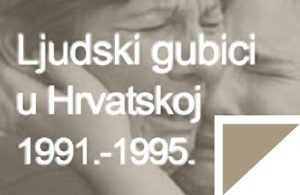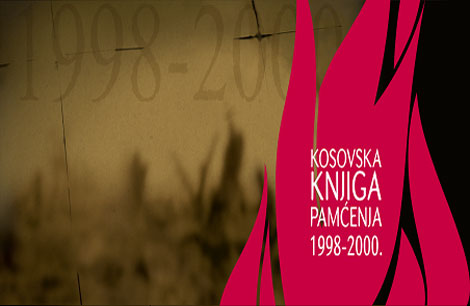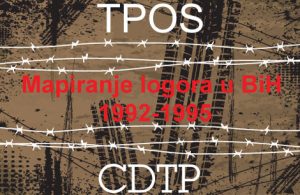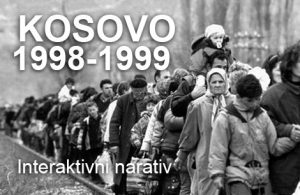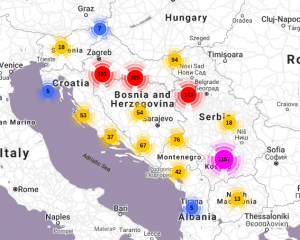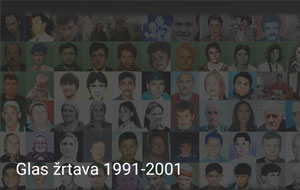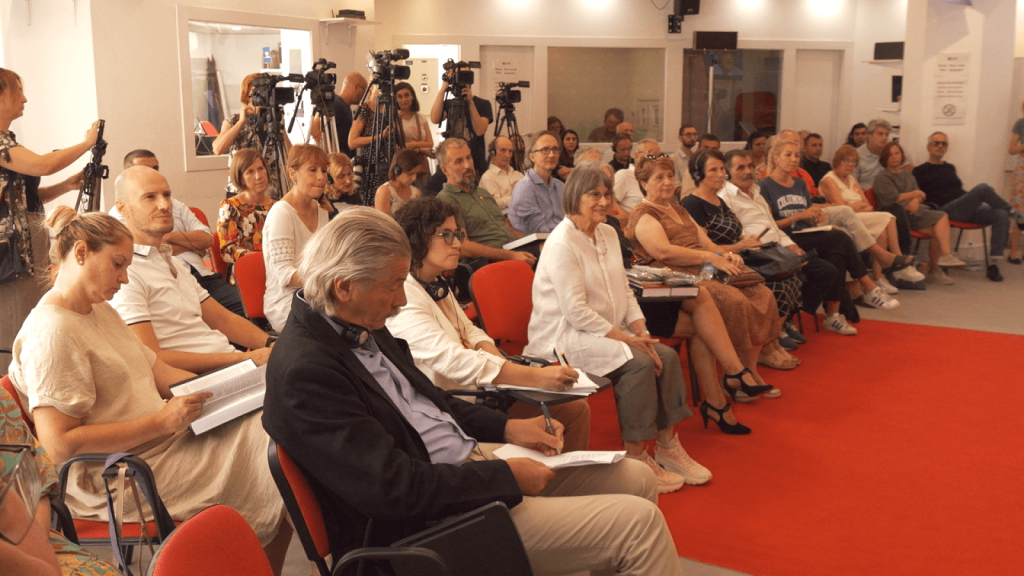
04.09.2024.
“Dignity for the Missing” – 1,636 STILL MISSING
Dignity for the Missing, International Day of the Disappeared, Missing personsAugust 31, 2024
After Pristina, the second volume of the Kosovo Memory Book, titled “Dignity for the Missing”, was presented in Belgrade on August 31, 2024. The book was published by the Humanitarian Law Center (HLC) and the Humanitarian Law Center Kosovo (HLCK) as a result of the RECOM Reconciliation Network project. The project received financial support at various stages from the EU, the Rockefeller Brothers Fund (RBF), Civil Rights Defenders (CRD), the National Endowment for Democracy (NED), and the Ministries of Foreign Affairs of Norway and the Czech Republic. This book about 1,636 missing persons is based on 6,714 documents preserved in the joint database of the HLC and HLCK. The most significant source concerning the circumstances of the disappearances consists of 2,007 statements from family members and witnesses, corroborated by an additional 1,178 reports on further investigations, and 397 status verification reports to determine whether a reported victim was indeed a victim. Among the missing are 1,487 civilians. For the identification of 151 missing persons, sufficient blood samples have not been provided. The missing persons include 272 individuals over the age of 70, 120 under the age of 18, and 72 persons with severe disabilities.
At the presentation in Belgrade of the book “Dignity for the Missing” on August 31, 2024, the speakers in addition to Nataša Kandić, who led the research in Serbia and Kosovo and edited the book, included Matthew Holliday, Programme Director of the International Commission on Missing Persons (ICMP); Sylvie Estriga, representing the Political Section of the EU Delegation to Serbia; and journalist Nedim Sejdinović.
The families of the missing face unique life situations. For years, they believed their missing loved ones were still alive. Many families paid for information that their loved ones were “alive,” hoping that an “important connection” would bring them home. As the years passed, families found solace in the hope of finding the remains and burying them, and having a grave to lay flowers on, and so to be able to remember, and to show others that they had “found their own.” Over time, families developed a unique language. When a family was called to collect the identified remains of a missing member, it was felt as if they had been “found.” A father would say, “I’ve found my son.” The grave assumed a magical power – proof that the missing person had existed. At the book presentation, Nataša Kandić emphasised the life situation of the families of the missing – that the missing live only in the memory of their families, and that “Dignity for the Missing” transfers this memory from the family circle into society, preventing the missing from being erased as if they had never existed.
Matthew Holliday reminded the audience that between 350 and 400 human remains are still in the mortuary in Pristina, calling it the largest above-ground mass grave. He mentioned that the ICMP still holds a vast number of unmatched reference samples provided by families who are still searching for their missing loved ones. He posed the question: Where are the bodies?
Sylvie Estriga called for overcoming ethnic differences, and pointed out that many families still do not know the fate of their members, and that their frustration is legitimate. She assessed that the rights of the families would have been better addressed had the Law on Missing Persons been adopted.
Nedim Sejdinović described the book as a “monument to the missing, to our misfortune, and to our recent past,” and said it is “a register of human sorrow and misfortune, but also a book of hope. The hope is not only that the missing will be found, but that the 1990s will never return.” He stated that this book, with its “sorrowful content,” is meticulously crafted: “The victims are spoken of in the only way they can and should be spoken of – with dignity, factually and exactly, in short sentences that reject any subjectivity or ideological affiliation, but which, as you read them, nevertheless take your breath away.”
At the book presentation, Sunčica Stojanović and Budimir Maslar shared personal memories – Sunčica of her brother Tihomir, and Budimir of his sister Natalija. Tihomir loved music and spoke English well. He lived with his parents and sister in Smederevo. The parents were originally from the village of Paralovo in the municipality of Gnjilane. Because of this, Tihomir’s colleagues at work often reproached him for not going to Kosovo to fight. But his family were opposed to his going as a volunteer. He did, however, leave on August 14, 1999, after the arrival of KFOR. He felt drawn to go, to help the Serbs in communication with foreigners. But he couldn’t find work, and on August 17, 1999, he started back. From the village, he boarded a bus to Gnjilane – since that moment, he has not been seen again. In 2005, Sunčica, a philosophy teacher, found a job in Kosovo, hoping to obtain information about her brother. She still teaches in Serbian in high schools, but has learned nothing about her brother.
Budimir had begged his sister to join him and his family in Montenegro, but she refused. After three days, he returned to take her back with him at any cost. She agreed, but halfway there, she returned to Trebović near Peć. After KFOR’s arrival, Budimir was the first to apply for the renovation of their house, just to try to find out something about Natalija, to find her remains, and to bury her. He searched the ground around the house, and around every tree, but found no trace. He learned nothing from the Albanian neighbors, who claimed they knew nothing. After six years, at the funeral of the mother of a priest whom he knew, he heard from a man who had fled Kosovo and now lives in Switzerland, that his sister and mother were killed by KLA soldiers – that they had raped Natalija, and then shot both women. Budimir does not give up, hoping that one day he will find his sister’s remains and bury her properly.
Watch the recording of the presentation of the book held on August 31, 2024.
See the photo gallery.
